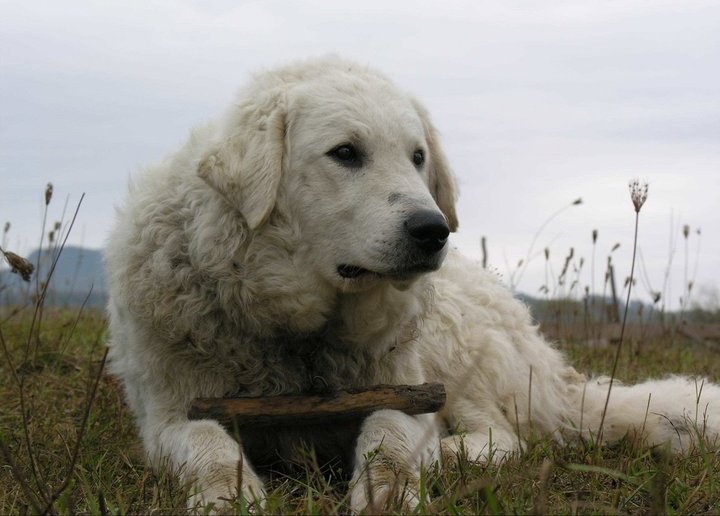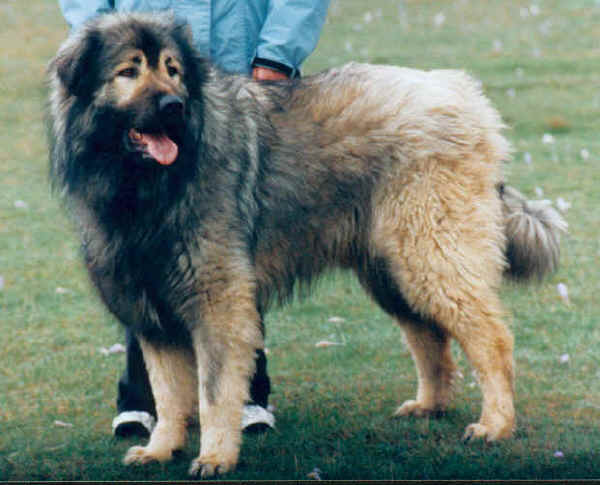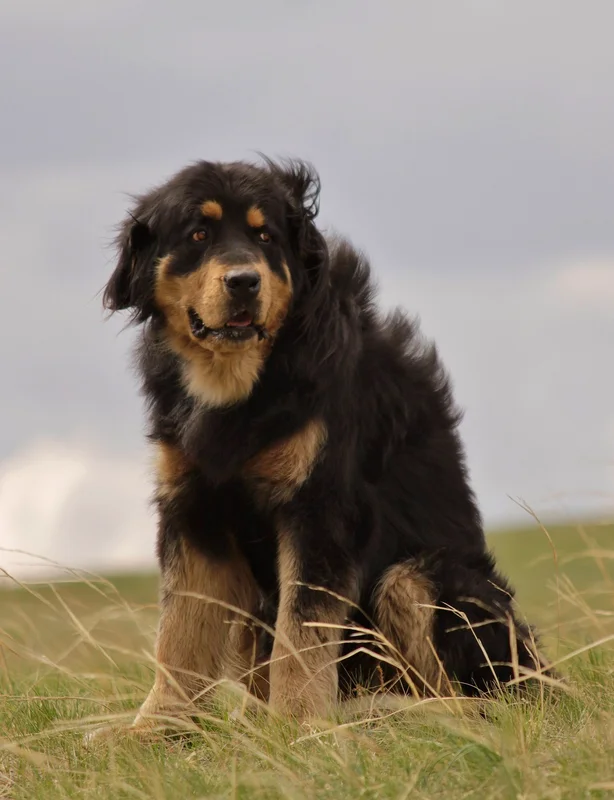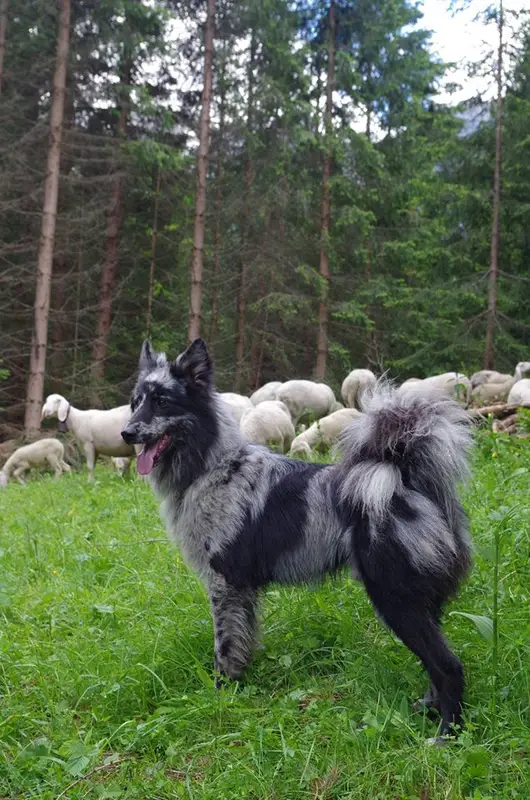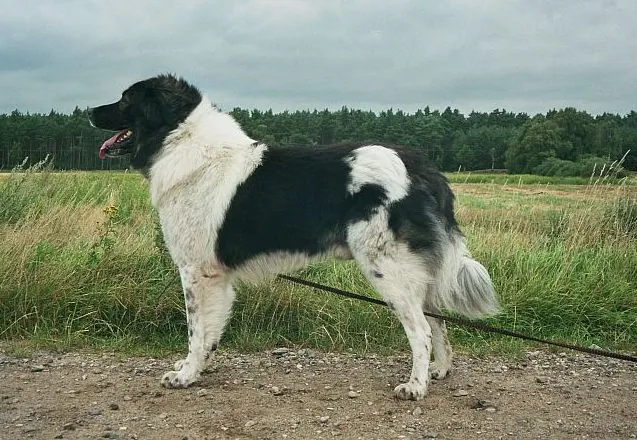Sarabi
The Sarabi, or Sarplaninac, is a powerful livestock guardian known for its loyalty and protective instincts. With a majestic appearance and strong work ethic, this breed excels in guarding and companionship.
Overview
🐕Breed Overview
✨Key Traits
💡What Makes Sarabi Special
The Sarabi's most defining traits include its strong protective instincts, intelligence, and loyalty. These dogs are known for their ability to work independently, often taking on the role of guardian without constant supervision.
Their calm and composed nature makes them excellent companions, while their aloofness with strangers ensures they remain vigilant protectors. Sarabis are also known for their adaptability to various environments, thriving in both rural and suburban settings as long as their exercise and socialization needs are met.
Their strong bond with their families and gentle demeanor with children further enhance their appeal as family pets.
The Sarabi, also known as the Sarplaninac, is a majestic and powerful breed originating from the mountainous regions of the Balkans. With a history steeped in tradition, these dogs were bred primarily as livestock guardians, tasked with protecting flocks from predators such as wolves and bears. Their robust build, characterized by a thick, dense coat and strong bone structure, makes them well-suited for harsh outdoor environments.
Sarabis are known for their independent and protective nature, often forming strong bonds with their families while remaining aloof with strangers. This breed requires consistent training and socialization from a young age to ensure they develop into well-rounded companions. Their intelligence and work ethic make them excellent candidates for various tasks, including guarding, herding, and even search and rescue operations.
Living with a Sarabi means embracing their strong instincts and providing them with ample exercise and mental stimulation. Whether in a rural setting or a family home, the Sarabi thrives when given a job to do, making them a loyal and dedicated companion for experienced dog owners. With their striking appearance and unwavering loyalty, the Sarabi is a breed that commands respect and admiration.
🎉Fun Facts
Sarabis have been used in military roles, showcasing their versatility beyond livestock guarding.
The Sarabi is known for its ability to fend off large predators, including wolves and bears.
They are often referred to as 'majestic guardians' due to their imposing stature and protective nature.
Breed Characteristics
Family & Friends
Good Behavior
Get Up & Go
Household Harmony
Temperament & Personality
✨Key Traits
🐕Core Temperament
The Sarabi possesses a calm and dignified temperament, characterized by its independence and protective nature. They are loyal companions who form strong bonds with their families, often displaying gentle behavior towards children.
However, their natural wariness of strangers can lead to suspicion, making early socialization crucial. While they are not aggressive, they will defend their loved ones fiercely if they sense a threat.
Their intelligence and ability to work independently make them excellent guardians, but they require consistent training to channel their instincts appropriately. Overall, the Sarabi is a devoted and reliable breed, best suited for experienced dog owners who can provide the leadership and socialization they need.
💫Personality Profile
The Sarabi is a dignified and independent breed, known for its protective instincts and loyalty to its family. They are generally calm and composed, displaying a serene demeanor in familiar surroundings.
While they may be aloof with strangers, their affectionate nature shines through with family members, especially children. Sarabis are intelligent dogs that require mental stimulation and consistent training to thrive.
Their natural guarding instincts make them vigilant protectors, and they often take it upon themselves to ensure the safety of their loved ones. However, their independent streak can lead to stubbornness, making early socialization and training essential to foster a well-rounded temperament.
🔊Vocal Tendencies
The Sarabi is generally not a vocal breed, with a barking tendency rated at 2 out of 5. They may bark to alert their owners of potential threats or when they perceive danger, but excessive barking is not typical.
Their vocalizations are usually reserved for specific situations, such as greeting visitors or expressing discomfort. With proper training and socialization, owners can manage their barking tendencies effectively, ensuring a harmonious living environment.
Affection & Social Traits
Energy & Activity
Communication Style
Care Requirements
🏃♂️Exercise Requirements
Daily Exercise
The Sarabi, or Sarplaninac, is a robust and active breed that requires a significant amount of exercise to maintain its physical and mental well-being. Ideally, an adult Sarabi should engage in at least 60 to 90 minutes of exercise daily. This can be broken down into two or three sessions throughout the day, incorporating a mix of activities such as long walks, hikes, and play sessions.
Given their history as livestock guardians, they thrive in environments where they can roam and explore. Activities like running, fetching, and engaging in dog sports can help channel their energy effectively. Puppies should have shorter, more frequent exercise sessions to avoid overexertion, while senior dogs may require gentler activities to accommodate their physical limitations.
Regular exercise not only helps manage their weight but also promotes cardiovascular health, reduces behavioral issues, and enhances their overall happiness. Insufficient exercise can lead to weight gain, destructive behavior, and increased anxiety, making it crucial for owners to prioritize their Sarabi's activity needs.
Preferred Activities
🏠Living & Adaptability
Space Requirements
The Sarabi is a large breed that requires ample space to thrive. Ideally, they should have access to a large yard or open area where they can run and explore.
While they can adapt to living in a house with a smaller yard, it is essential to ensure they receive sufficient exercise and mental stimulation. For owners in apartments or smaller living spaces, regular trips to parks or open areas for exercise are necessary.
The breed's size and energy level mean that confinement in small spaces can lead to frustration and destructive behavior. Therefore, providing a secure outdoor area where they can roam freely is highly beneficial.
Climate Preference
🍲Feeding Guide
Schedule
Food Types
Portion Size
Special Nutritional Needs
The Sarabi requires a balanced diet rich in protein to support its muscular build and active lifestyle. High-quality dog food formulated for large breeds is recommended to ensure they receive the necessary nutrients.
Owners should monitor for any food sensitivities and adjust their diet accordingly. Supplements such as omega fatty acids can help maintain coat health, while joint supplements may be beneficial for older dogs.
✨Grooming Requirements
Grooming Overview
The Sarabi has a thick, dense coat that requires regular grooming to keep it healthy and free of mats. Their coat can be rough or smooth, and it typically sheds moderately.
Regular brushing, at least once a week, is recommended to remove loose hair and prevent matting. During shedding seasons, more frequent brushing may be necessary.
Bathing should be done as needed, typically every few months, to maintain coat cleanliness without stripping natural oils. Nail trimming, ear cleaning, and dental care should also be part of the grooming routine to ensure overall health.
Care Schedule
Brush weekly; bathe every 2-3 months; trim nails every 2-4 weeks.
Health Profile
⚕️Health Care
Regular health care is essential for the Sarabi's longevity. Routine veterinary check-ups, vaccinations, and preventive treatments can help detect health issues early and ensure the dog remains healthy throughout its life.
Owners should also be proactive in managing their dog's weight, dental health, and overall fitness. Engaging in regular exercise and providing a balanced diet are crucial components of maintaining optimal health and extending the Sarabi's lifespan.
Health Issues Overview
⏳Average Lifespan
Genetic Factors
Genetics play a significant role in the Sarabi's lifespan, with hereditary health issues being a concern. Responsible breeding practices that prioritize genetic diversity can help reduce the risk of inherited conditions.
Potential owners should seek reputable breeders who conduct health screenings and provide health clearances for their breeding dogs. Understanding the genetic background of a Sarabi can help owners anticipate potential health issues and make informed decisions regarding care and management.
Living Conditions
The Sarabi's lifespan can be influenced by various environmental factors, including housing conditions, climate, and social interactions. Providing a safe and stimulating environment is crucial for their well-being.
Dogs that live in rural settings with ample space to roam and engage in natural behaviors tend to have longer lifespans. Conversely, those confined to small spaces may experience stress and behavioral issues, potentially shortening their lifespan.
Regular social interactions with family members and other pets can also contribute positively to their mental health and longevity.
🏥Common Health Issues
Hip Dysplasia
Warning Signs
🔬Diagnosis
X-rays and physical examination by a veterinarian.
💊Treatment
Medications, weight management, and in severe cases, surgical intervention.
📝Management Tips
Maintain a healthy weight, provide joint supplements, and engage in low-impact exercise to reduce stress on joints.
Elbow Dysplasia
Warning Signs
🔬Diagnosis
X-rays and veterinary assessment.
💊Treatment
Medications, physical therapy, and surgery if necessary.
📝Management Tips
Regular vet check-ups, controlled exercise, and weight management.
Progressive Retinal Atrophy (PRA)
Warning Signs
🔬Diagnosis
Veterinary eye examination.
💊Treatment
No cure; supportive care and environmental adjustments.
📝Management Tips
Regular eye check-ups and monitoring for signs of vision loss.
🛡️Preventive Care
🔬Hip Evaluation
Hip Evaluation: Assesses the hip joints for dysplasia and other abnormalities, crucial for large breeds prone to hip issues.
📅 Annually after 2 years of age.
🔬Elbow Evaluation
Elbow Evaluation: Checks for elbow dysplasia and other joint issues, important for maintaining mobility and comfort.
📅 Annually after 2 years of age.
🔬Ophthalmic Examination
Ophthalmic Examination: Evaluates eye health and screens for conditions like PRA, which can affect vision in the breed.
📅 Every 1-2 years, especially in older dogs.
Training
🧠Intelligence & Trainability
💪Work Drive
The Sarabi has a strong work drive, stemming from its history as a livestock guardian. This breed thrives when given tasks to complete, whether it be guarding property, herding livestock, or participating in dog sports.
Their intelligence and independence mean they can work effectively without constant supervision, making them ideal for rural settings where they can roam and perform their duties. Engaging the Sarabi in regular activities that challenge their physical and mental capabilities is essential for their well-being.
Without sufficient stimulation, they may become bored and exhibit undesirable behaviors. Providing opportunities for work and play will help fulfill their natural instincts and keep them happy.
⚠️Training Considerations
The Sarabi can exhibit behavioral challenges, particularly if not properly socialized from a young age. Their natural wariness of strangers and protective instincts can lead to aggression if they perceive a threat. To mitigate these challenges, early socialization is crucial.
Exposing the Sarabi to various people, environments, and situations during their formative months can help them develop a more balanced temperament. Additionally, consistent and firm training is essential to establish boundaries and expectations. Owners should employ positive reinforcement techniques to encourage desired behaviors while discouraging unwanted ones.
Patience and understanding are key, as the Sarabi's independent nature may lead to stubbornness during training sessions. Regular training and socialization will help the Sarabi become a well-adjusted and confident companion.
📝Training Tips
Training a Sarabi requires a firm yet gentle approach, as they are known for their independent and sometimes stubborn nature. Positive reinforcement methods, such as treats and praise, work best to motivate this breed. Start training early, focusing on basic commands and socialization to build a strong foundation.
Consistency is key; establish a routine and stick to it to help the Sarabi understand expectations. Incorporate various training activities to keep them engaged, such as obedience training, agility exercises, and scent work. Given their intelligence, Sarabi dogs thrive on mental stimulation, so providing puzzle toys and interactive games can also enhance their training experience.
Be prepared for challenges, as the Sarabi may test boundaries, but with patience and persistence, they can become well-trained and obedient companions.
History & Heritage
📜Origin Story
The Sarabi, known as the Sarplaninac, originated in the rugged terrains of the Sar Mountains, which straddle the borders of Kosovo, Macedonia, and Albania. This region, characterized by its challenging landscapes and diverse wildlife, provided the perfect backdrop for the development of a robust and resilient breed. The Sarabi was bred by local shepherds who needed a reliable guardian to protect their flocks from predators such as wolves and bears.
Over time, these dogs became integral to the pastoral lifestyle of the region, earning a reputation for their loyalty and protective instincts. The breed's name reflects its geographical roots, with 'Sar' referring to the Sar Mountains and 'planinac' meaning mountain dog in Serbian. As the breed gained recognition, it was utilized by military forces in the early 20th century, further solidifying its status as a formidable guardian.
Today, the Sarabi continues to thrive in its native lands and is gaining popularity in other parts of the world, where it is appreciated for its working abilities and companionship.
⏳Development History
The Sarabi breed has a rich history that dates back centuries, evolving in the mountainous regions of the former Yugoslavia. Originally bred for their exceptional guarding abilities, these dogs were developed to protect livestock from predators in harsh environments.
The breed has remained relatively pure, with little outside influence, which has helped maintain its unique characteristics. Over the years, the Sarabi has been utilized not only as a livestock guardian but also as a military dog, serving in various capacities throughout its history.
The breed's standards have been established by various kennel clubs, ensuring the preservation of its traits and abilities. Today, the Sarabi is recognized for its strength, intelligence, and loyalty, making it a valued companion and working dog.
🛡️Purpose & Historical Role
Historically, the Sarabi was bred primarily as a livestock guardian, tasked with protecting sheep and other livestock from predators in the mountainous regions of the Balkans. Their natural instincts and protective nature made them invaluable to shepherds, who relied on these dogs to safeguard their flocks.
Over the years, the Sarabi has also been used in military roles, serving as guard dogs and companions for soldiers. In modern times, the breed is recognized for its versatility, excelling not only as a guardian but also as a loyal family companion.
Their strong work ethic and intelligence make them suitable for various tasks, including search and rescue, therapy work, and as watchdogs.
🏺Cultural Significance
The Sarabi, or Sarplaninac, holds a significant place in the cultural heritage of the Balkans, particularly in Serbia, Macedonia, and Albania. Historically, these dogs were revered as guardians of livestock, particularly sheep, in the rugged terrains of the Sar Mountains.
Their role as protectors has made them symbols of loyalty and strength in local folklore. The breed's ability to fend off predators such as wolves and bears has contributed to its status as a national treasure in the regions where it is found.
In modern times, the Sarabi is gaining recognition beyond its native lands, particularly in North America, where it is being utilized for livestock protection and as a companion dog. Their majestic appearance and dignified demeanor continue to capture the admiration of dog enthusiasts worldwide.
Conservation Status
This breed is less common but has stable populations in certain regions.
